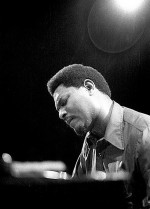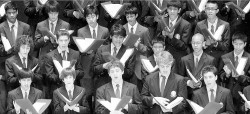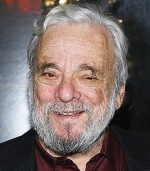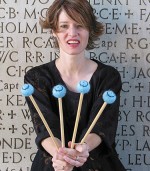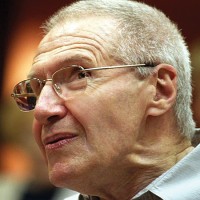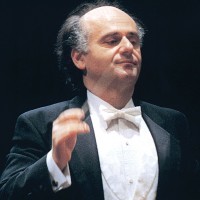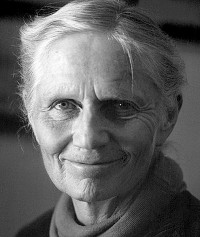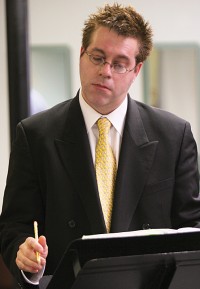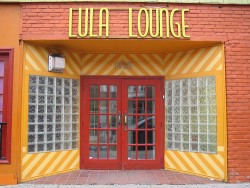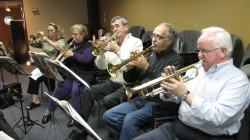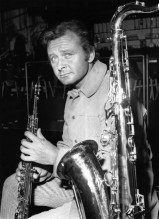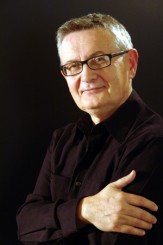Keeping it Live
As long as there is life, there will always be the gift of music. But live music requires an audience to be present in order to survive, and it is a challenge. When it comes to “getting bums in seats,” this challenge is typically addressed by artists, venues and, if publicists are lucky, the media. Judging by the state of live music venues in this city, audiences may not realize how much they are a part of this art form. As Avishai Cohen recently said, “People who come to the concert are the concert as much as the artist.”
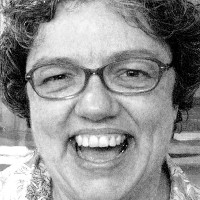 Enter the Toronto Music Lovers, a local branch of the popular Meetup website (www.meetup.com). This thriving social networking group perfectly exemplifies the mission statement of Meetup: “to revitalize local community” by creating groups that “are powerful enough to make a difference.” After four-and-a-half years, the group boasts nearly 850 members, has graced 200 events and continues to make a great difference in our music community. This difference could not be made without Marg Cameron, the group’s dedicated founder and host.
Enter the Toronto Music Lovers, a local branch of the popular Meetup website (www.meetup.com). This thriving social networking group perfectly exemplifies the mission statement of Meetup: “to revitalize local community” by creating groups that “are powerful enough to make a difference.” After four-and-a-half years, the group boasts nearly 850 members, has graced 200 events and continues to make a great difference in our music community. This difference could not be made without Marg Cameron, the group’s dedicated founder and host.
A Torontonian since 1979, Cameron works for the Alzheimer Society of Toronto, where she runs their library and facilitates several support groups for caregivers. She also studies expressive arts at ISIS, belongs to a pottery studio and thinks of herself as a full-time music lover.
“I have always loved music. I was active in a number of choirs and studied piano when I was younger. As a teenager, I would occasionally get to visit Toronto, and can recall going to the Riverboat in Yorkville for folk music on New Year’s Eve, and attending the Mariposa Festival when it was still on Centre Island. I fell in love with the magic of live music way back then and it’s with me still.”
Establishing the Toronto Music Lovers Meetup Group came about completely by accident, she explains.
“On the site you can start a wish list for any type of group you want if one doesn’t exist. At the time there were no groups for live music, but wish lists for lots of different genres – jazz, blues, folk. As I have very eclectic tastes, I figured I’d start a group that went to all types of live music and encourage some of these people to join. I thought perhaps I’d get a few members and then there’d be someone to go out with when I wanted to see a live band. Now there are nearly 850 members and counting, and we average about 20-30 or so at each event.”
Cameron is a very committed volunteer, ideally suited to spearheading such a group. She is friendly, organized, inclusive and full of positive energy.
“I love hearing live music, meeting new people, making new friends. It’s been a very positive experience for me. Some members have told me that the group has been a lifeline for them in hard times, which is both rewarding and humbling at the same time. If I can bring some joy into other people’s lives then so much the better. I think music is a great way to bring people together, a positive focus in one’s week, therapeutic and uplifting at the same time. For the main part, the members of TML are wonderful people and I love having them in my life.”
With over 200 events since 2006, Cameron and the TML have graced a majority of the venues in The WholeNote’s directory. Not that there haven’t been, or don’t continue to be, challenges.
“There are several challenges actually. There aren’t a lot of places with live music large enough to hold a group of more than 20. Some venues aren’t very good at promoting their events in advance so it’s hard to always give group members adequate notice of upcoming events. Some places that do have live music don’t really highlight this feature properly, what with stages sort of stuck in the middle of nowhere so the bands can’t be seen and poor sound systems so that the music can’t be heard… It would be nice to find some new places big enough to hold a large group of people that actually play live blues and jazz on a regular basis, take good care of their musicians and actually appreciate our patronage.”
Future plans for the Toronto Music Lovers Meetup Group? “To continue having great turnouts for events, to use our numbers to support worth while causes – in the past we’ve gone to benefit concerts for WarChild and ArtsCan. Soon we’ll be also out in support of CAMH and the Second Base Youth Shelter.”
What should readers know about joining the Meetup group? “They can find us online at www.meetup.com/to-musiclovers. There is no fee for joining. We have approximately three or four meetups each month. We are not a singles club – just lovers of great live music. Our members are very friendly and easy going. Everyone is welcome, there’s no age limit. If you love live music, like to have fun, and want to actively support the local music scene, then you should consider joining us.
Blues singer Raoul Bhaneja has developed a close rapport with the Meetup Group; the group attended his sold-out tribute to Little Walter CD release last May. “As an artist these days,” he notes, “I’m told that our future relies on corporate sponsorship and partnerships of that kind. But TML reminds us that the focus of a grassroots organization can be just as powerful and in fact more relevant. When Cameron arrives at a show with anywhere from 15 to 50 Toronto Music Lovers, not only does it change the dynamic of the band by providing a secure income, but it changes the energy of the room – and for that I am truly grateful.” Bhaneja’s band, Raoul and the Big Time play the Rex Hotel on December 18 and January 16.
Club Sampling
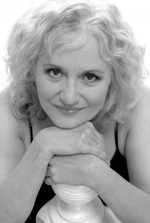 In other news, one of Toronto’s most versatile vocalists will be performing at Ten Feet Tall on January 15. A self-taught singer/songwriter, Debbie Fleming is a remarkable talent who is equally at home singing R&B, jazz, folk, country or classical music. She can frequently be heard singing soprano with the Toronto Mendelssohn Choir, and has fronted several of her own bands over the years including the a-cappella group Hampton Avenue and the folk/roots trio Choir Girlz. Fleming is also highly skilled as a choral arranger, and you can hear some of her Christmas charts when the precocious Ault Sisters take the stage at Hugh’s Room on the afternoon of December 12.
In other news, one of Toronto’s most versatile vocalists will be performing at Ten Feet Tall on January 15. A self-taught singer/songwriter, Debbie Fleming is a remarkable talent who is equally at home singing R&B, jazz, folk, country or classical music. She can frequently be heard singing soprano with the Toronto Mendelssohn Choir, and has fronted several of her own bands over the years including the a-cappella group Hampton Avenue and the folk/roots trio Choir Girlz. Fleming is also highly skilled as a choral arranger, and you can hear some of her Christmas charts when the precocious Ault Sisters take the stage at Hugh’s Room on the afternoon of December 12.
Speaking of Hugh’s Room, the legendary singer, pianist and songwriter Bob Dorough takes that stage on January 19 for what promises to be a sensational sold-out event. Dorough is a legend in the jazz world for memorable compositions like “Devil May Care” and “Comin’ Home Baby.” Catchy and hip, his songs have been recorded by Miles Davis, Blossom Dearie, Mel Tormé and Diana Krall. He is perhaps even more famous for setting the multiplication tables to music on ABC-TV’s “Schoolhouse Rock,” a Saturday morning cartoon series that ran from 1973-1985 featuring songs such as “Conjunction Junction,” “My Hero Zero” and “Three is a Magic Number.”
This sample just barely scratches the surface. See our Club Listings, beginning on page 58, for great music in December and January. Season’s Greetings to one and all – get out to hear some music and have a ball!
Ori Dagan is a Toronto-based jazz vocalist, voice actor and entertainment journalist. He can best be contacted at jazz@thewholenote.com.


